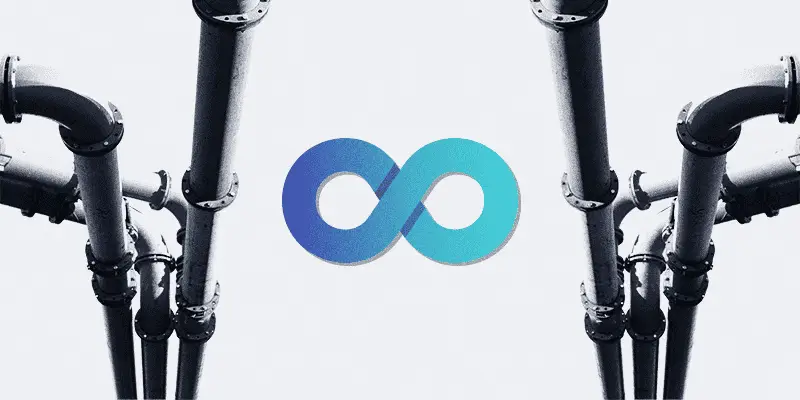A streamlined DevSecOps pipeline can increase the quality and amount of development releases your company can put out each year. These updates and applications will increase your value to your customers and push you forward within your industry.
Continuous Integration (CI) is an essential aspect of a streamlined DevSecOps pipeline.
Salesforce CI expedites the process of integrating the efforts of multiple developers into a single software release. It helps to organize your efforts and reduce the touchpoints needed by team members to get each commit into the shared repository.
This is an important facet of your development process. Salesforce CI is a powerful tool that is likely being used by your competitors. And in an effort to remain competitive and ideally become a leader in your industry, you must utilize CI in your development efforts.
But simply signing up for a CI service won’t ensure that you get the most from your investment. A series of best practices will direct your efforts and help you see the greatest return from utilizing a Salesforce CI tool.

Here are 8 tips to help you get the most from Salesforce CI:
1. Automation
The main advantage of Salesforce CI is the ability to automate processes. This makes the process much faster as it also reduces the likelihood of errors.
Manual integration of code commits to the shared repository is time consuming and prone to errors.
Even the most detail-oriented members of our teams are susceptible to overlooking small details that can have a large impact. Automating these processes ensures that these details are accounted for and reduces the number of errors.
High release velocity depends on streamlining the processes throughout your DevSecOps pipeline. And automation is the best way to speed these processes along.
2. Ensure High Code Quality
Coding errors can affect overall functionality, create data security risks, and threaten a successful deployment. Finding and resolving errors in the coding structure early in the development pipeline reduces the associated cost of rectifying them.
Coding errors become more difficult to fix—and more costly—when they are found later in the DevSecOps pipeline.
Utilizing a static code analysis tool to find coding errors in real time will save your team time and money. This alerts developers to errors as they occur, which gives them the opportunity to guarantee proper coding structures before they send their changes into Salesforce CI.

3. Clearly Delegate Tasks
DevSecOps involves the efforts of a variety of teams. These individuals need to be able to work together smoothly in order to produce the best results. And Salesforce CI can be optimized when your team members have a clear understanding of how their roles impact the pipeline as a whole.
Clearly communicate the tasks each member is to accomplish in order to set up the Salesforce CI tool to properly perform its functions.
All aspects of the DevSecOps pipeline will work better when everyone is on the same page. This includes everything that leads up to Salesforce CI. Multiple developers will be merging their commits and there shouldn’t be any confusion on the process.
4. Test Everything
Working with various code commits means there are plenty of opportunities for these updates to misfire when put together. Numerous aspects of the overall project will be addressed at different times, so it’s essential to verify these pieces will fit together well.
Testing the functionality of the code commits as they are created will reduce the chances of major issues after Salesforce CI compiles everything.
The speed and flexibility of continuous integration is best utilized when the code commits are proven to be strong. This can be verified with static code analysis for strong code, but testing can also be done to ensure the commits work well together.
5. Keep Everything Centralized
Branching is a popular method of copying the code to work in a separate environment. Version Control is a great tool to help with this tactic. However, these branches should be merged back in with the central repository before feeding into Salesforce CI.
Merging various branches back into a centralized location allows CI to effectively perform its functions.
Salesforce CI will run unit and integration tests once everything is compiled into the shared repository. Routing the various branches back to a centralized location ensures these tests will be accurate.

6. Quickly Address Errors and Bugs
Salesforce CI will alert your team to bugs and errors that aren’t found prior to integration. It is then up to your team to resolve these issues as quickly as possible so you can re-test everything before moving onto deployment.
Streamlining the DevSecOps pipeline relies on quickly addressing errors and bugs so automated tools can push the project toward launch.
Ideally these problems will be found early in the process, but quickly addressing them whenever their found will help reduce costs and allow team members to focus on moving the project forward.
7. Utilize a Reliable Salesforce CI Tool
Not all tools are the same. This is true for Salesforce CI options as well. It’s in your best interest to find a full DevSecOps pipeline that can support the various processes needed for successful and speedy development projects.
A Salesforce CI tool that is scalable and flexible will provide benefits for every development project, no matter the scope or size.
Continuous delivery and deployment (CD) are the next step after Salesforce CI. Find a platform that offers both, so nothing is lost in translation between these two essential steps.
8. Work Off Platform to Avoid Disruptions
Salesforce-native options might seem like a great option, but they are susceptible to outages when Salesforce itself goes down. This locks you out of your system and leaves you waiting for service to be restored.
When it comes to Salesforce, working off-platform allows you to continue working while all your competition waits for Salesforce to regain functionality.
AutoRABIT provides the only complete DevSecOps platform that functions outside of the Salesforce environment. This can be the difference between a productive day that pushes your company forward and time lost due to an outage.
